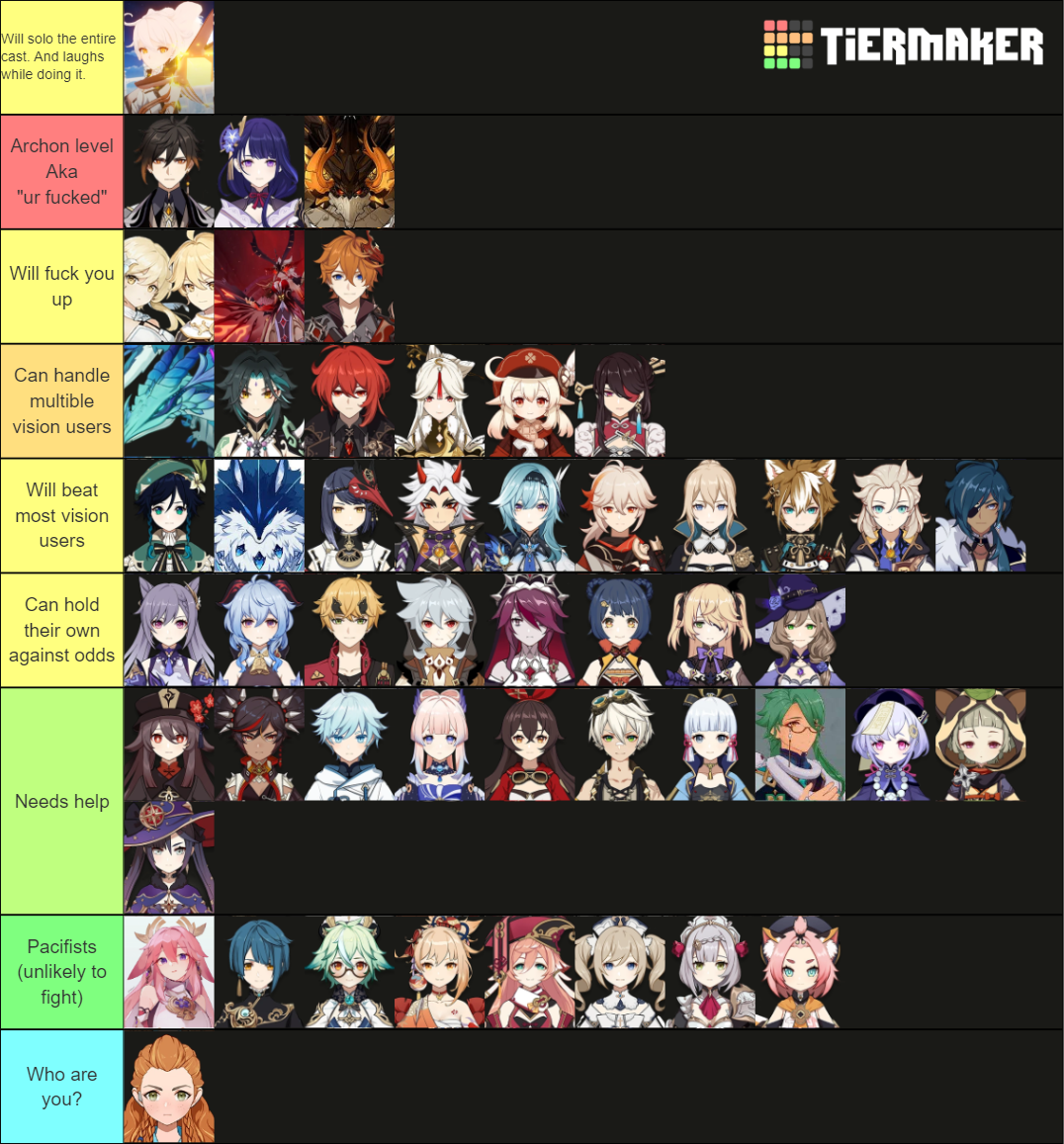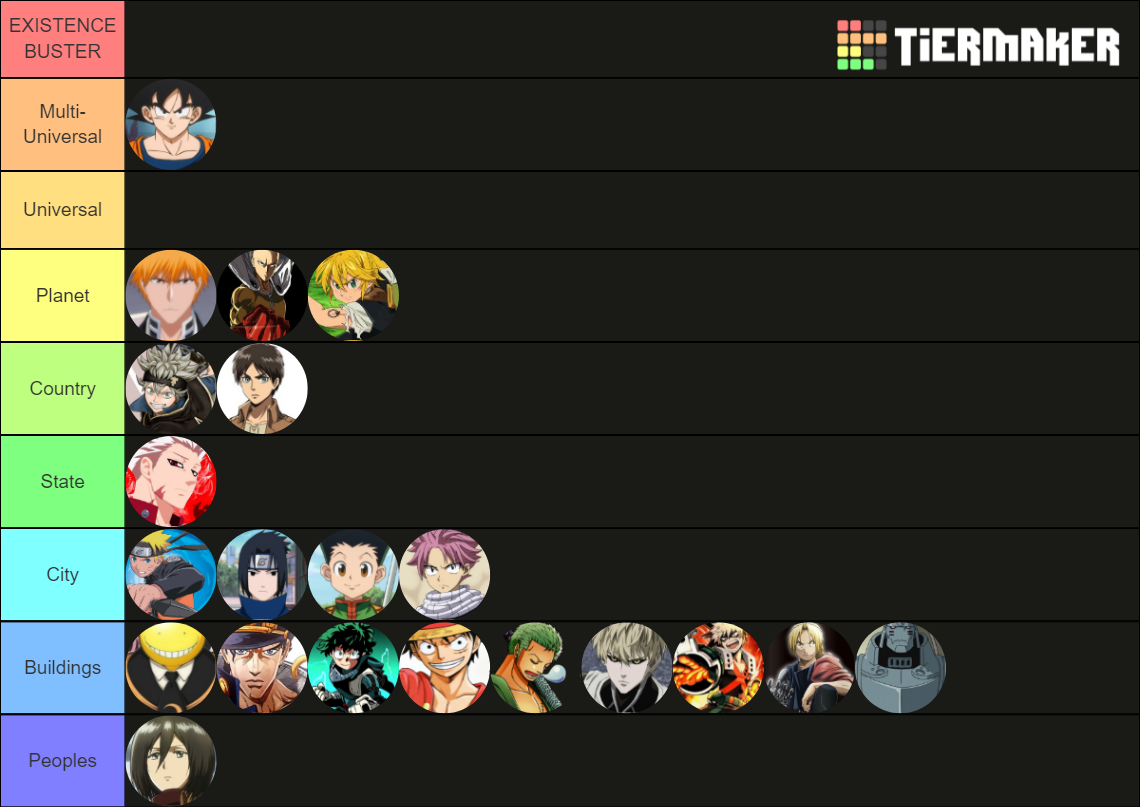Guide To Fictional Character Power Tiers | Explained
Does the concept of a character's power level, often debated amongst fans, have a structured, quantifiable system? The answer, surprisingly, is a resounding yes, and it's a system that allows for rigorous comparison and analysis of fictional characters across various universes.
The world of fiction is vast and varied, populated by characters of unimaginable power. From the humble street-level hero to cosmic entities capable of reshaping reality, understanding their capabilities is a complex undertaking. Fans and dedicated communities have developed sophisticated methods to assess and compare these powers, giving rise to power scaling. This system moves beyond casual observation, offering a framework for quantifying strength, durability, speed, and other abilities. It enables a more precise understanding of fictional character strengths and allows for educated discussions and predictions. The aim here is to provide a comprehensive overview of the hierarchical system employed, often seen within online communities dedicated to such discussions, offering a guide to understanding the methodologies and the crucial details that underpin their use. While a simple glance at a characters actions may appear to provide a rudimentary understanding, the nuances of power scaling require a more detailed approach.
Power scaling, at its heart, is the process of determining a character's strength and capabilities by comparing them to others. This may involve analyzing their feats, abilities, and statements made about them, all within the context of their respective fictional universes. The use of powerscaling, like many systems, has roots and evolution over time. The concept has gradually evolved, adapting to the increasing complexity of fictional narratives and the creative ingenuity of authors. Early power scaling discussions were often based on general impressions and immediate feats, such as a characters ability to lift heavy objects or cause localized destruction. Now, powerscaling delves into aspects, such as the ability to manipulate energy, travel through dimensions, or even control the fabric of reality.
The foundation of this methodology is often the 'tiering system.' This framework, developed by fans and often refined over time, is a graded structure for measuring character power. Characters are not merely assigned a numerical value; rather, they are placed into tiers. These tiers represent a range of power, from the street level to levels that go far beyond our understanding of reality, such as outerversal.
The power scaling framework provides a versatile means of categorizing characters. Many factors affect character placement within these categories. Characters are assessed through several methods. These may include destructive capability, the scope of their abilities, and their potential for impacting their fictional worlds. It uses multiple systems of science, mathematics, and philosophy to ensure a comprehensive approach to character analysis. By incorporating these frameworks, the approach allows characters to scale across a wide spectrum of conceptual frameworks.
It's important to remember that power scaling is not simply about how much damage a character can inflict. While destructive capacity and area of effect are certainly key indicators of power, other factors play critical roles. Characters may possess abilities that allow them to overcome opponents with superior destructive power. The understanding of these complex interactions is vital to appreciating the nuances of power scaling.
The use of this system is not limited to any single platform. Communities on websites, forums, and social media channels like the r/whowouldwin subreddit provide venues for discussions and debate. These online communities act as hubs for exchanging information, sharing viewpoints, and fine-tuning the methodologies of power scaling. Users within these communities use their combined knowledge to determine the powers of characters in fiction. The discussions, insights, and comparative analyses that occur are invaluable in defining and applying these tiers to a range of characters from fiction and real life.
Understanding the tiers and the terminology associated with them is crucial for effective communication. Characters are assigned to various tiers based on their ability to affect or create/destroy things.
Heres a breakdown of a few of the main tiers, representing a fraction of the spectrum found within power scaling discussions:
Street Level: Characters in this tier typically possess powers that are limited in scope. Superhuman strength, speed, or durability are common characteristics. This level focuses on individual combat or localized conflicts, often confined to a specific environment. A good example of a Street Level character may be an elite athlete with enhanced physical abilities, who could still be defeated by a well-placed bullet.
Island/Mountain Level: This level represents a significant increase in destructive capacity. Characters at this level can devastate regions or create events on the scale of islands and mountains. The actions of these characters have far-reaching consequences, capable of altering the landscapes around them. In this level, characters can cause natural disasters or cause large-scale destruction.
Beyond these initial tiers, the power scaling system continues, with each tier representing a significant jump in power. Characters can be classified by their capacity to impact the universe. Examples of these powers include manipulating time, space, and reality.
In the realm of power scaling, as with all forms of analysis, context is important. The nature of the fictional universe, the rules that govern it, and the specific powers a character possesses all contribute to their overall power level. The use of a tiering system helps to make sense of this complex issue.
The power scaling system can be adapted to a vast range of fictional universes. This versatility allows it to be used across many different types of media, from comic books and manga to video games and animated movies.
A deeper dive into power scaling shows the importance of understanding what makes a character powerful. The system emphasizes the importance of understanding the difference between a characters destructive capacity, the reach of their powers, and the implications of their feats. This understanding is the foundation for a comprehensive, nuanced approach to character comparison.
When exploring the concept of power scaling, it is important to understand that context, consistency, and the rules that govern the universe of the character being examined all play a key role. Analyzing the feats and abilities of a character within their own fictional world helps to assign them to the appropriate tier. The value of power scaling, therefore, lies in its ability to provide a structured framework for the character analysis and discussion. This framework gives fans the means to engage in well-reasoned arguments and comparative studies.
A strong community with diverse views is what fuels the growth of the power scaling system. Fans come together to develop the system and to update and refine it in response to the evolving fictional universes. These communities are where characters are analyzed and where debates and discussions occur.
The use of power scaling, like many intellectual pursuits, requires a commitment to critical thinking, logical reasoning, and a willingness to adapt to new information. The power scaling framework is a constantly evolving one. Its creators and users continue to refine it in response to a rapidly changing landscape of fictional narratives.
Power scaling, as it exists today, is an ongoing project. It reflects the creativity of fictional worlds and the intellectual curiosity of their fans. As long as narratives continue to evolve, so will the process of power scaling.
| Aspect | Details |
|---|---|
| Concept | A hierarchical system for categorizing fictional characters and objects based on their feats and abilities, enabling power comparisons and discussions. |
| Purpose | To provide a framework for measuring and comparing the power levels of fictional entities. |
| Methodology | Utilizes a tiering system that categorizes characters based on destructive capacity, the scope of their abilities, and the potential to impact their fictional worlds. |
| Tiers (Examples) | Street Level, Island/Mountain Level, and levels representing powers beyond our normal understanding, like outerversal, with each level indicating a significant jump in power. |
| Applications | Analyzing fictional characters across different universes, facilitating informed discussions, and predicting outcomes in hypothetical scenarios. |
| Community | Online communities, such as r/whowouldwin, play a vital role in developing, refining, and applying the system. |
| Key Components | Destructive capacity, area of effect, abilities, feats, and the context of the fictional universe. |
| Limitations | Requires understanding of the fictional context and rules, and may encounter subjectivity due to interpretations. |
| Evolution | Continues to evolve as fictional narratives become more complex, adapting to new concepts and characters. |


